A Hike up Mount Misen & The Sacred Deer of Miyajima
Published by CamDarling on
Miyajima Island is one of my favorite destinations. I spent around 5 week in Hiroshima, a lot of it on this wonderful island paradise. Miyajima has been an important sacred location for over 500 years and sees over 5 million visitors each year! The whole island is said to be inhabited by spirits and no one is permitted to be born or die on the island. I didn’t see any spirits, but I did see dozens of wild deer roaming the town, they are tame but also very hungry and will follow you all day for food.
Miyajima has some great trails that go deep into the mountain, passing many small shrines on the way to the summit plateau! Mt. Misen is 535m in elevation, with a comfy resting place at the top with panoramic views of Hiroshima prefecture! You can also follow another trail to Tsutsumigaura Beach. End your hike by dipping into the refreshing blue waters on a relatively empty and secluded beach!
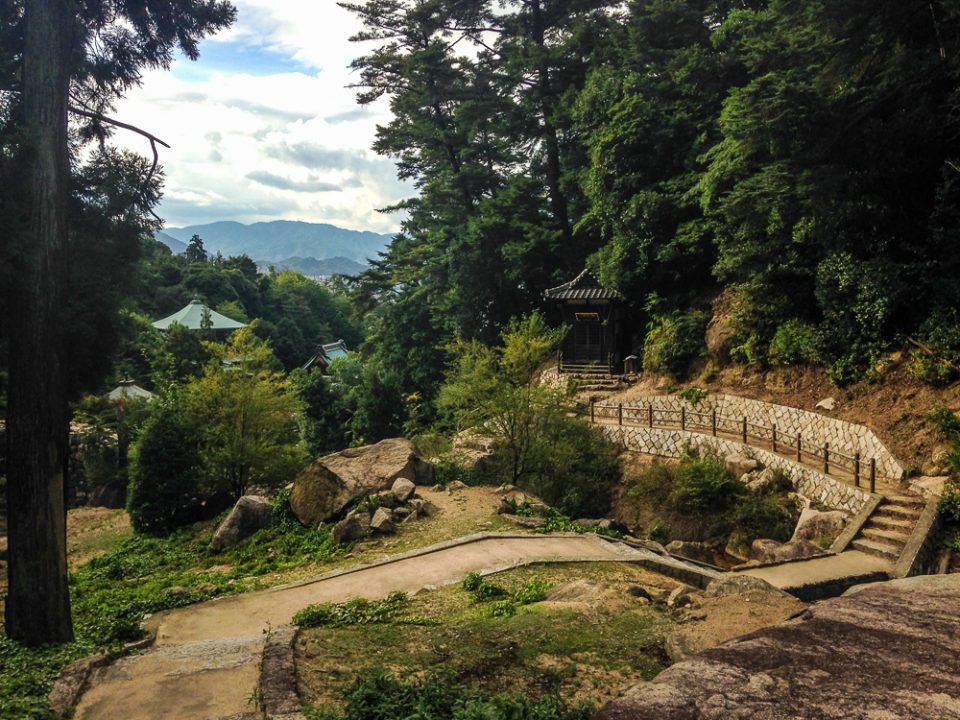
Hiking to the Summit of Mt. Misen
When I say “hike”, I mean it in the most casual way because Mt. Misen is only 535m in elevation over a 2.5km trail. It’s barely a walk for hardcore athletes, so for the everyday traveler it’s perfect! Japan is known as a country that attracts many older travelers, so you can opt to take a gondola to the top for 1,800 Yen ($16 USD) round-trip.
For me, I’m young but certainly not runner or a mountaineer. I started from the ferry and walked along the roadside until I reached Tsutsumigaura Beach on the northern side of the island, a 30 min walk. Then I found the trailhead for the Tsutsumigaura Nature Trail and made my way into the mountains to eventually arrive near the gondola. From there I took the Momijidani Route to the summit and back down the Omoto route to finished beside the beautiful Daisho-in Temple.
Map to Mt. Misen
All in all, it took me 4 hours to complete the 6 kms, with a long rest at the summit. It was 32 degrees and sunny, so I was super sweaty and thankful for the trail canopy and that I brought a lot of water.
Miyajima is a small island so the peak is a similar elevation to Victoria Peak in Hong Kong. However, the island is located very close to Hiroshima and on a clear sunny day the view is magnificent! The resting platform at the summit is super comfortable and a great place to take a lunch break!
Hiking to the top of Mt. Misen isn’t exactly like climbing Everest, Mt. Kinobalu in Borneo, or even the Grouse Grind in Vancouver, it’s a very pleasant stroll appropriate for the sacred island and the tourists that come here to visit. On a nice day with cool temperatures, the walk is easily fit for everyone of all ages.
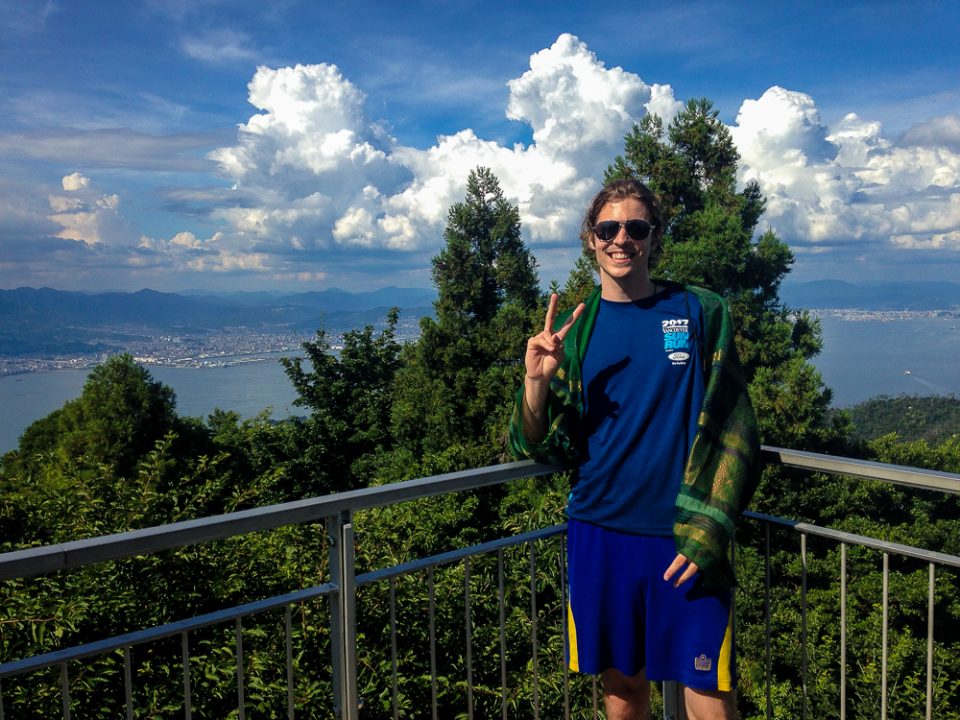
Mt. Misen Photo Gallery
Sacred Deer of Miyajima
There are two places in Japan where you can find friendly deer: Nara Park and Miyajima Island. These deer are not wild, but not quite domestic animals like your pet cat or dog. They aren’t scared of humans at all, in fact they will beg you for food or try or as I found out… steal it from your bags or pockets.
When you arrive on Miyajima Island you will hear an announcement “Don’t feed the deer” and see many signs. Honestly, I don’t know how to feel about this situation. Online you can read articles like “The Sacred Deer of Miyajima are STARVING”… obvious outrage articles published by mainstream media. The truth about the deer is a little grey and doesn’t make for a catchy headline.
Why are the deer so hungry?
There are over 500 deer on Miyajima Island, with no predators. They have reached peak carrying capacity for the small island. If you walk around, you won’t see any tall grass because the deer have grazed everything down. Now they are moving into the small village and eating leftover garbage or any edible plants left out.
The government protects the deer by law from being hunted or harmed because the deer are sacred messengers of Shinto, Japan’s official religion. The government’s position is “don’t feed the deer” which would normally be a good thing except this has left the deer in a terrible situation where they aren’t being fed by anyone, are roaming around eating garbage, and breeding until the whole population is starving and underfed.
Seriously, I had to wrestle my bag from a deer’s mouth, trick it into following someone else and physically push it away while trying to take a photo of Itsukushima’s famous Tori. They are tame but watch out! The males have their antlers trimmed in mating season but they still look intimidating.
A Solution from Canada
In Victoria, Canada we have a similar situation where semi-urbanized deer are “plentiful” and residents want to find alternatives to simply culling the population. In Victoria, the locals founded the “Urban Wildlife Stewardship Society“, a non-profit organization dedicated to finding science based solutions to the urban wildlife problem. You can find them on twitter @deerplan.
I reached out to an expert on ungulates (Deer, Elk, Caribou), my sister Siobhan Darlington who worked on the first stage of this project to capture and collar 20 female deer. The second stage involves using immunocontraceptive on the females to stop them from breeding for 5 to 6 years. 90% of deer have a baby every year, so this would cut the population down significantly but wouldn’t be permanent for each deer. It’s the first project of its kind in Canada and a possible solution to Japan’s urbanized deer problem.
Tourists love seeing the tame deer, children love it even more! It’s a huge attraction to the island that sees over 5 million visitors a year. But sadly, you do more harm than good by feeding the deer human foods.
Should something be done about Miyajima’s Deer?
A new policy could be put in place that keeps the deer from overpopulating the island and migrating to urban areas. Currently, the Miyajima Tourist Association doesn’t acknowledge the deer problem, only that “Recently, some deer set their dens in the town”. I’ve seen a change.org petition to do something about the deer in Miyajima but this isn’t a corporate issue like a zoo, it’s a religious and political problem that requires a scientific solution that works with the beliefs of the people.
As westerners we don’t understand the cultural significance of the deer, especially on an island like Miyajima that has thousands of years of history as a religious site and sacred island. It’s a place with traditions that are older than the British Empire, English/western culture and certainly my 25 years on earth. However the scientific solutions are being tested elsewhere like in Victoria. I urge you to check out the Urban Wildlife Society’s work because no amount of outrage articles in the Huffington Post is going to change the cultural and political reality in Japan.
Tsutsumigaura Beach
On the northern shore of Miyajima Island is a beautiful public beach with small huts, a local store, a nature park and a campground where you can rent a cabin or tent (or bring your own). For more info on camping, click here. The beach has a designated swimming area and warm sparkling blue waters. At the very tail end of Summer in August, each time I visited Tsutsumigaura Beach it was nearly empty. Why?
Even on a weekday, on this island that sees over 5 million visitors every year, the most gorgeous beach lies almost empty except for maybe five or six “gaijin” foreigners.
Before heading up on my hike to the summit of Mt. Misen, I couldn’t resist taking a refreshing dip in the warm summer waters. I had them almost all to myself!
I searched the internet and asked my Japanese friends why the beach was so empty, when it should be packed with tourists and locals. Between Hiroshima and Hatsukaichi, there are over 2.0 million residents within an hour from the beach.
According to both Matcha Japan Travel and Japan Travel, the beach is quite popular between mid July and August, this is the official “beach season”. After August 31st, the beach season is over and the facilities shut down for fall activities, even if all of September is 30 degrees and sunny. But there is more too it than just timing.
Japanese Beach Cultures
In Canada, this would be outrageous! In my hometown, when the snow has finally melted away and the summer temperatures heat up the sand, every beach is packed with locals and tourists enjoying the waves, boating and getting a nice tan! Despite being from such a northern region, most residents learn how to swim from a very young age. If the summer lasts until October, we will all be out enjoying the sun before it’s gone!
When I asked my local Japanese friends and others at my hostel, I was surprised that most of them don’t visit the beach in August and almost none of them can swim! The Japanese might visit a local pool but swimming in the open ocean is rare. Here is why…
The Japanese are taught from a young age to follow the rules. In an article by BBC Travel about why the beaches are empty after August, they say children are warned against breaking the rules: “The nail that sticks out, gets hammered down“. When there are no lifeguards on duty, few people visit the beach, and when they do, they won’t swim out of the designed swimming area!
For a long time, the Japanese are taught to live around the official four seasons, with each season having activities they should be doing. So going to the beach out of season just doesn’t happen! Plus, because of popular trends from Tokyo, pale skin is highly valued. The Japanese wear swimming shirts with sleeves in the water! Like under-armor! I’ve seen this before in Malaysia and Thailand. Even my own Japanese friends in Canada wore swimming outfits. In the west, a summer tan is proof of a summer well spent!
It’s a huge cultural difference. I’m used to slowly roasting and burning in the sun, it’s how I get my base tan. In Canada, we don’t have nice weather the rest of the year. So we are forced to enjoy 2 months of summer…until the 6 months of winter comes again. In Hiroshima, the summer is so hot, but the rest of the year is lovely too! I guess when you could go to the beach almost anytime of the year, following the official season guidelines just makes it easier.
That being said, it’s an amazing beach, with warm clear waters and wonderfully refreshing after a long hike to the top of Mt. Misen.
Directions to Miyajima Island
Street Car From Hiroshima
Miyajima Island, the JR line or the Street Car. I recommend the streetcar because you can pick up a 1 day Streetcar + Ferry pass for 840 Yen ($8.00 USD). See my last article on Hiroshima Peace Park for more details.
- Take the Hiroshima Dentetsu Streetcar #2 from downtown Hiroshima
- The last station is Hiroden-Miyajima
- 280 Yen ($2.50 USD) one way
- Take the JR Ferry to Miyajima Island for 300 Yen ($2.80 USD)
- 1h 15 minutes total, ferry included.
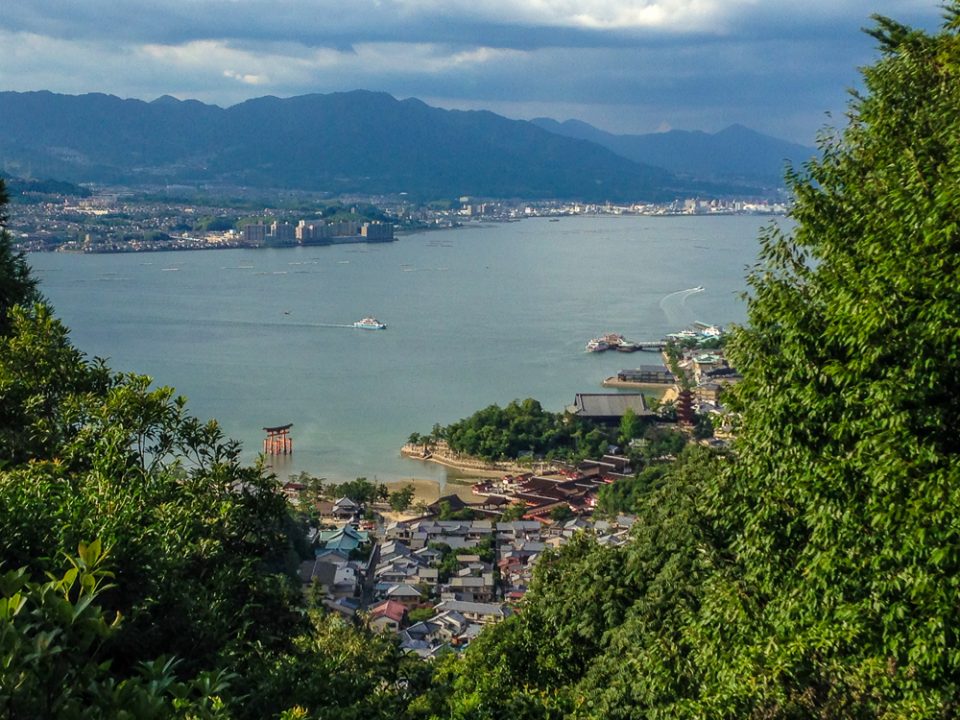

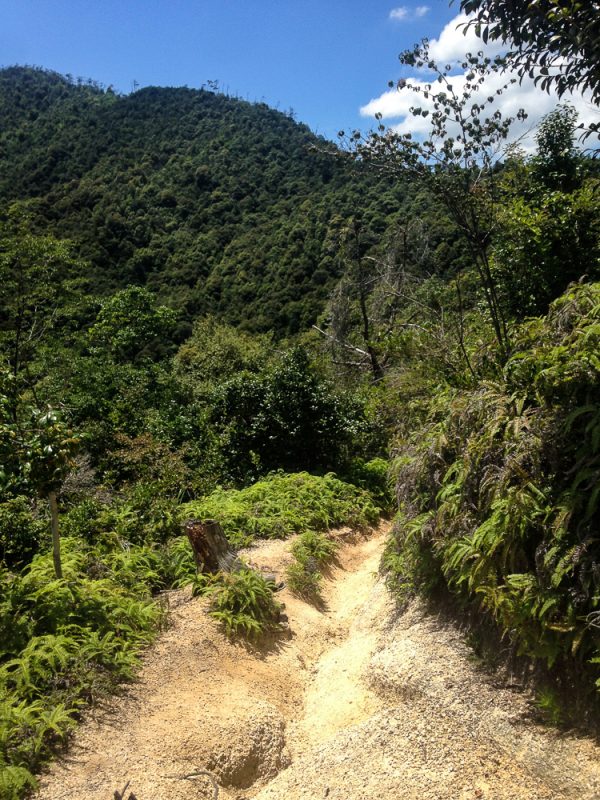
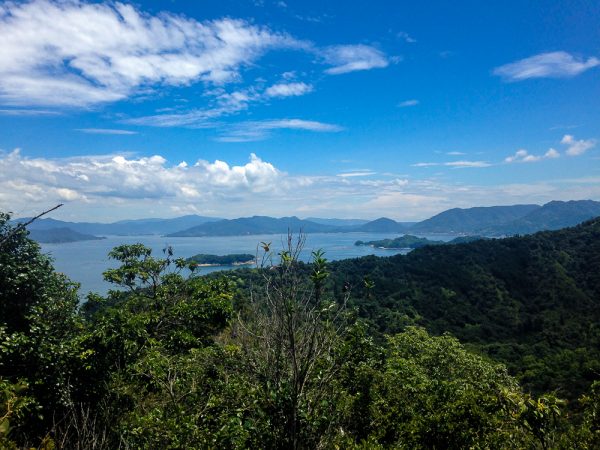
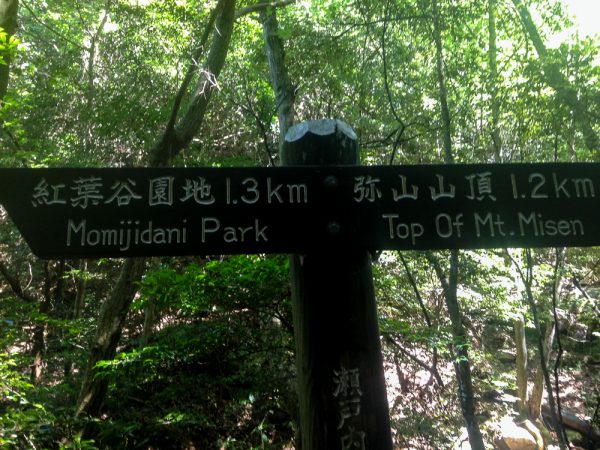

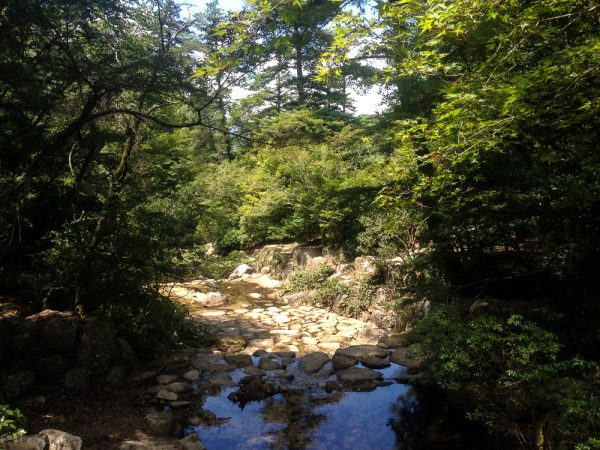
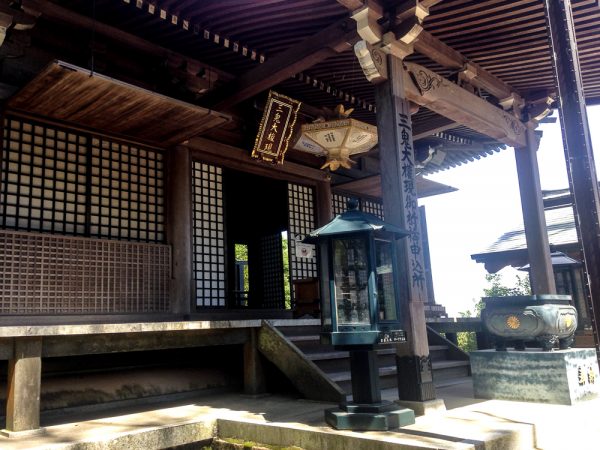
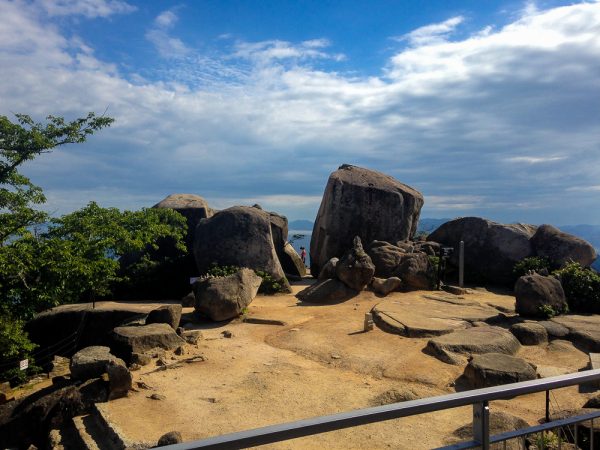
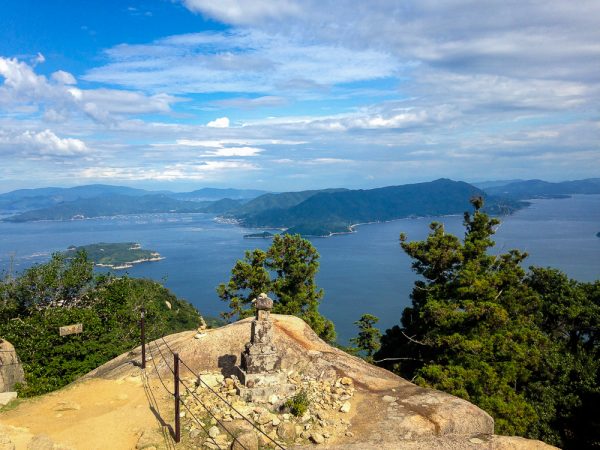
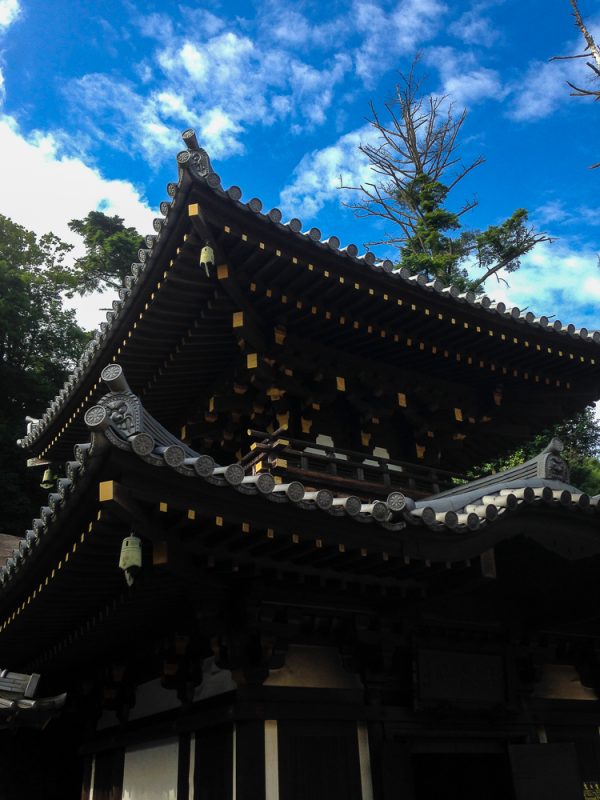
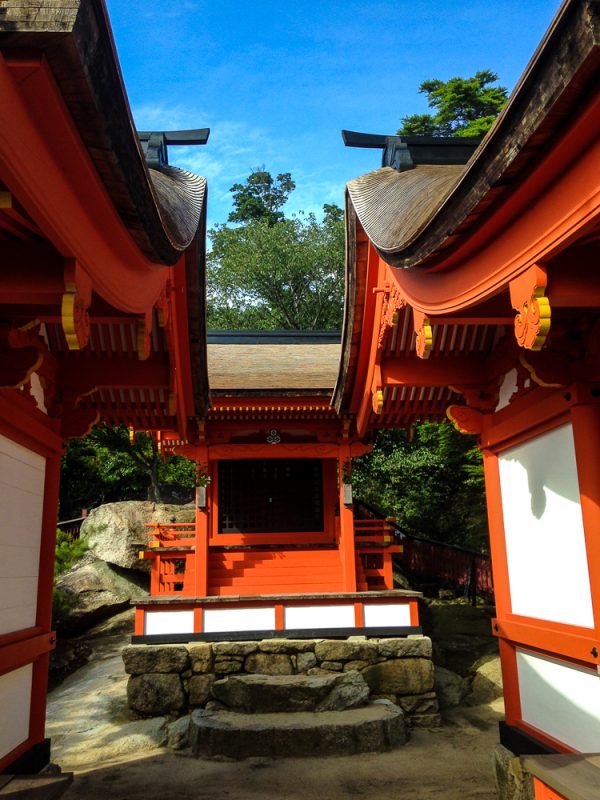
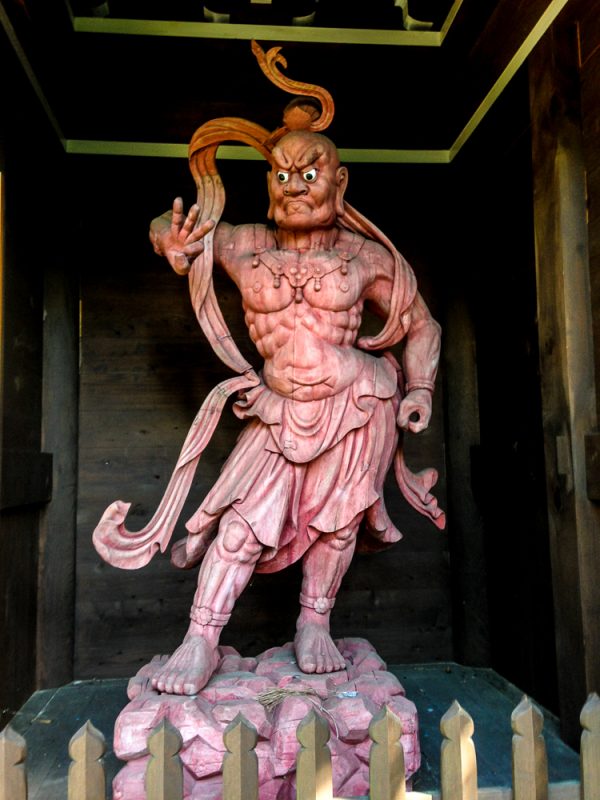
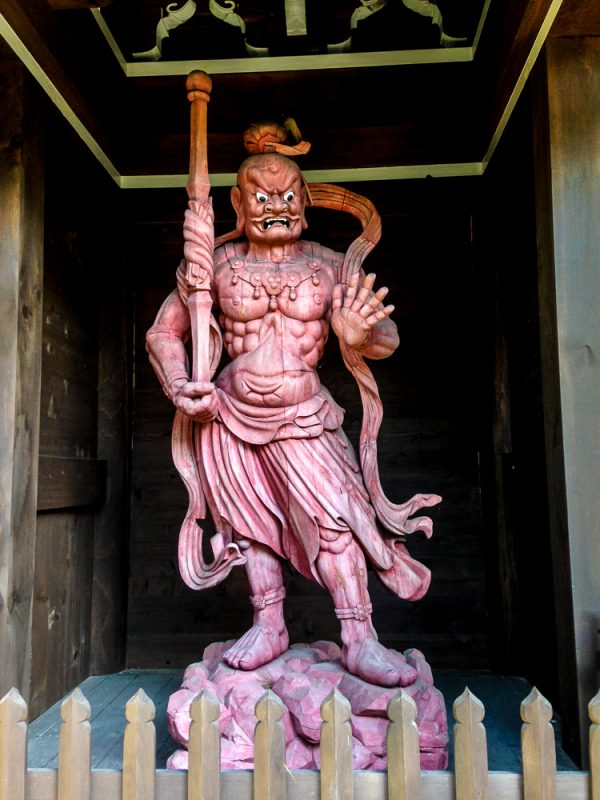
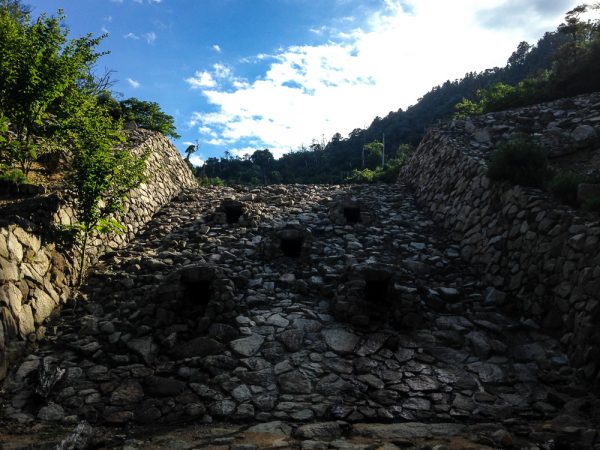
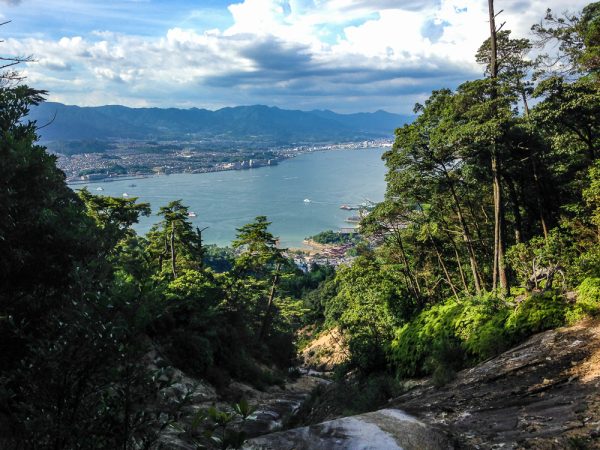
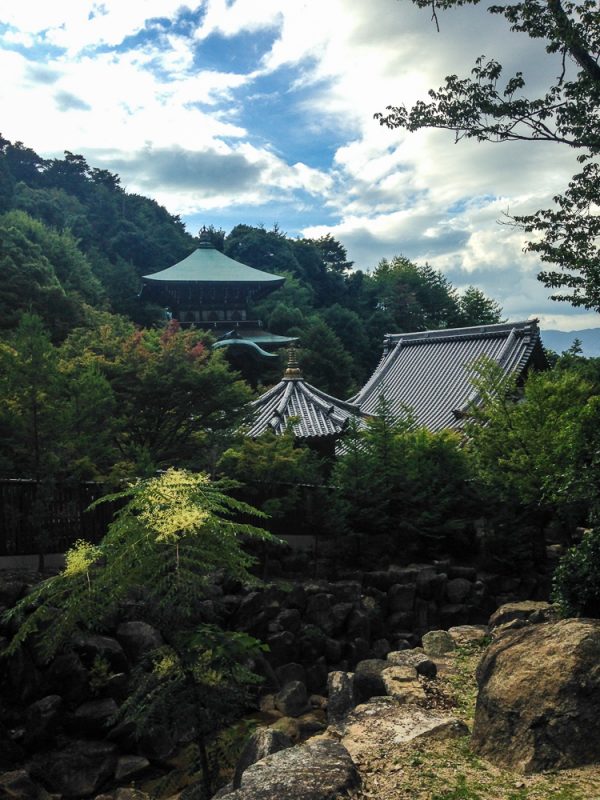
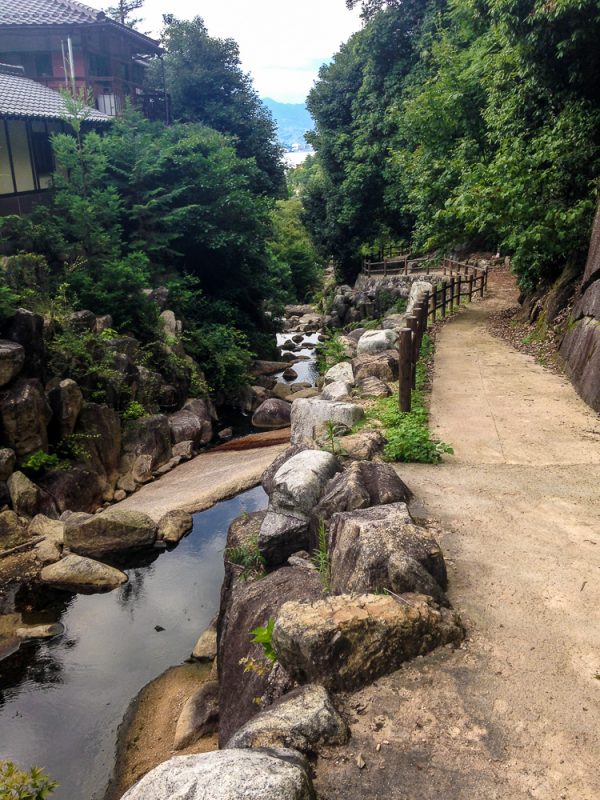
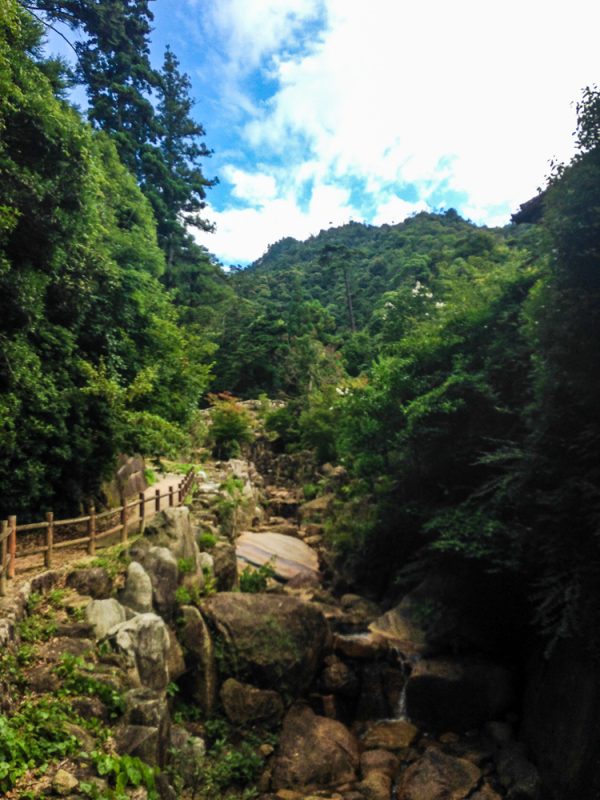
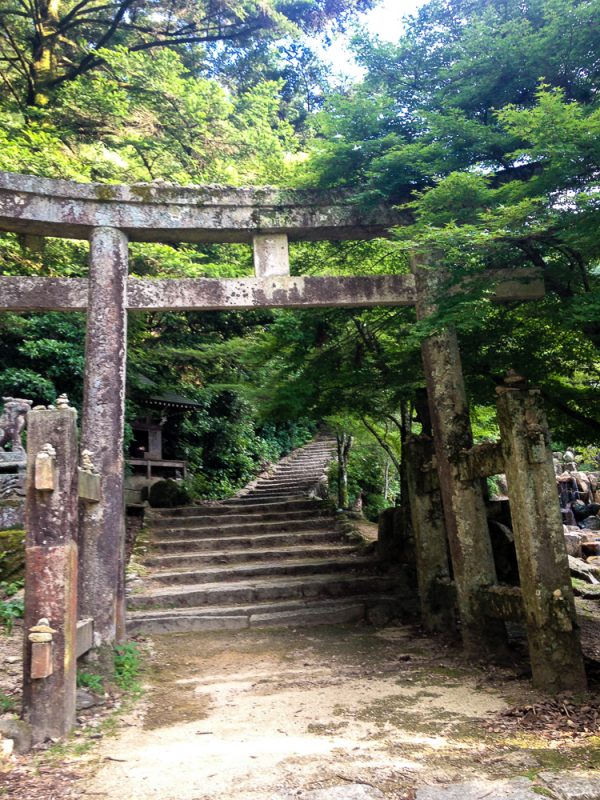


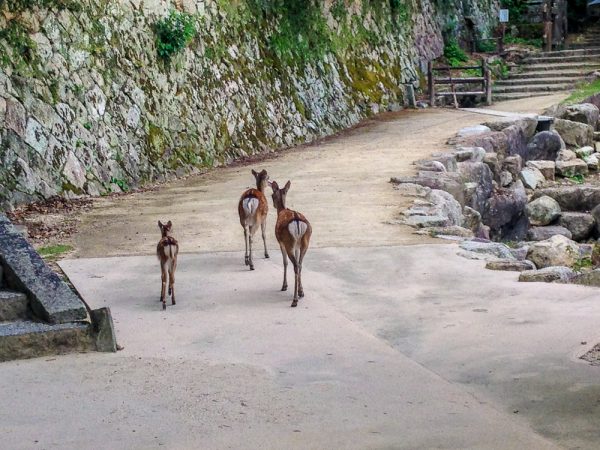
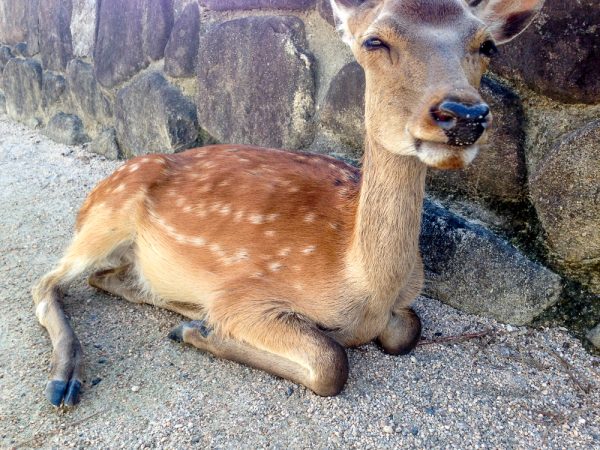
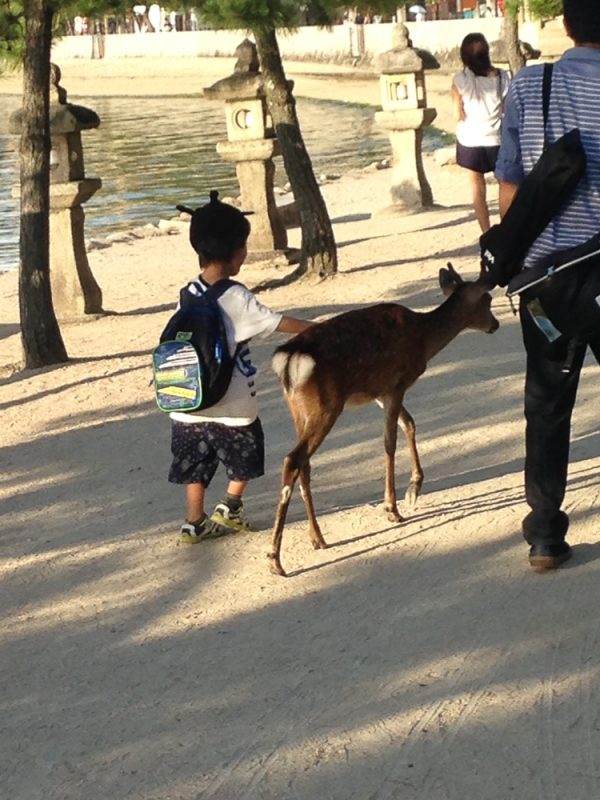
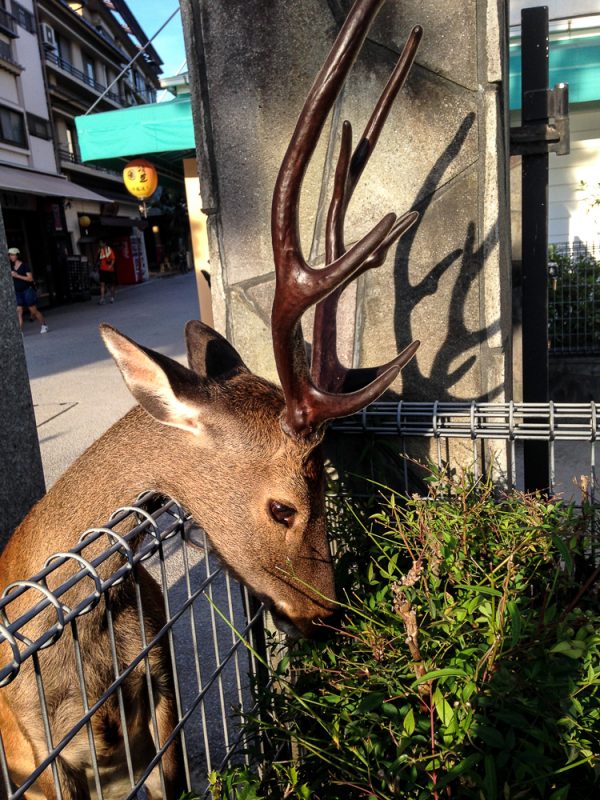

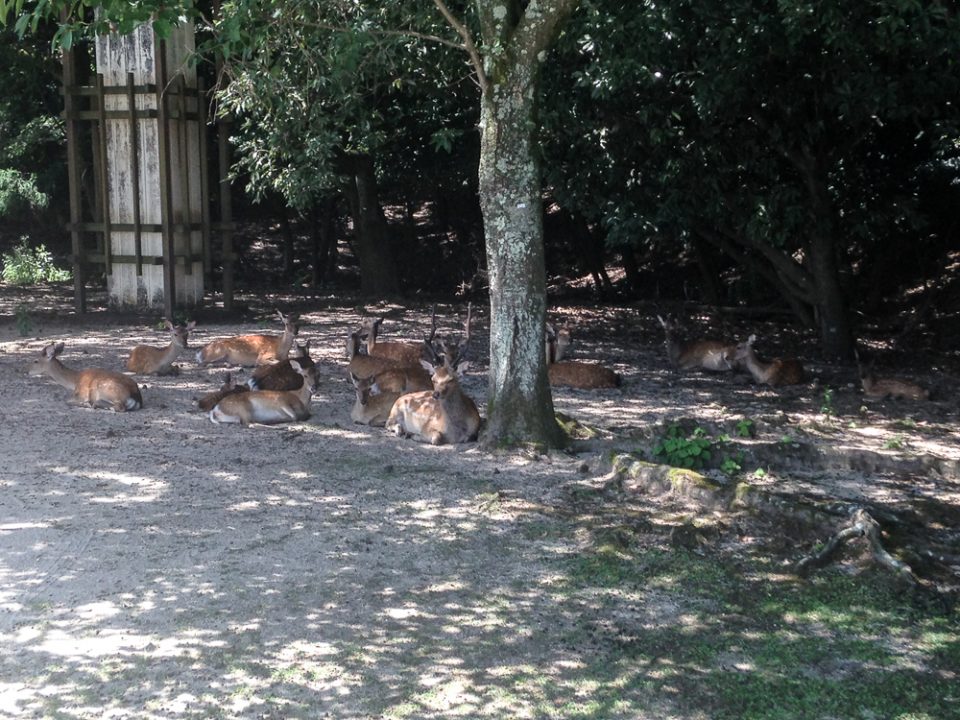
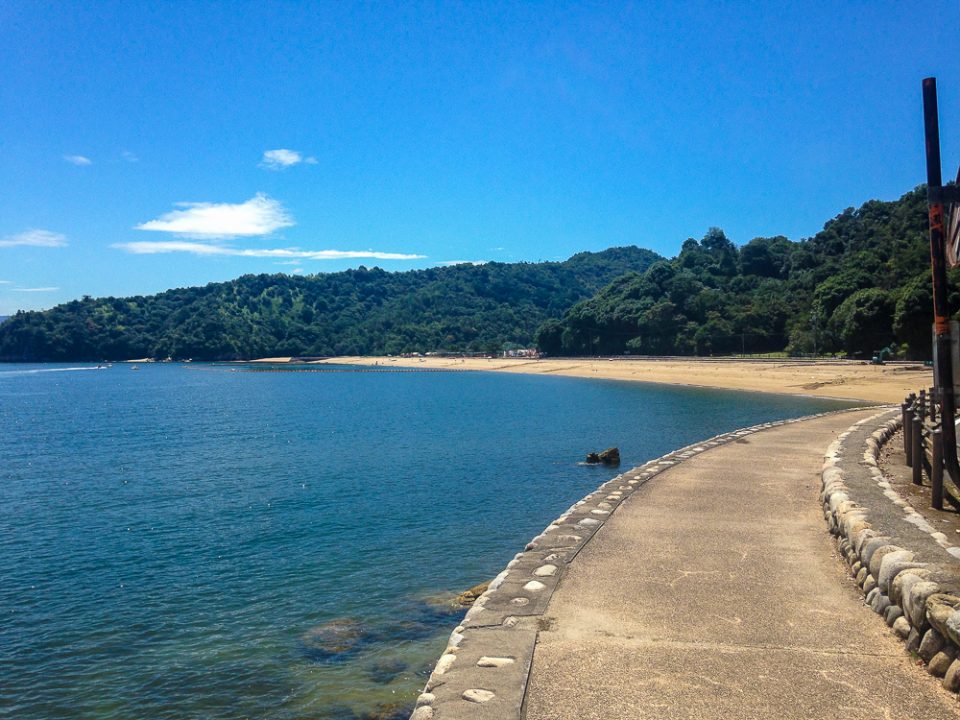
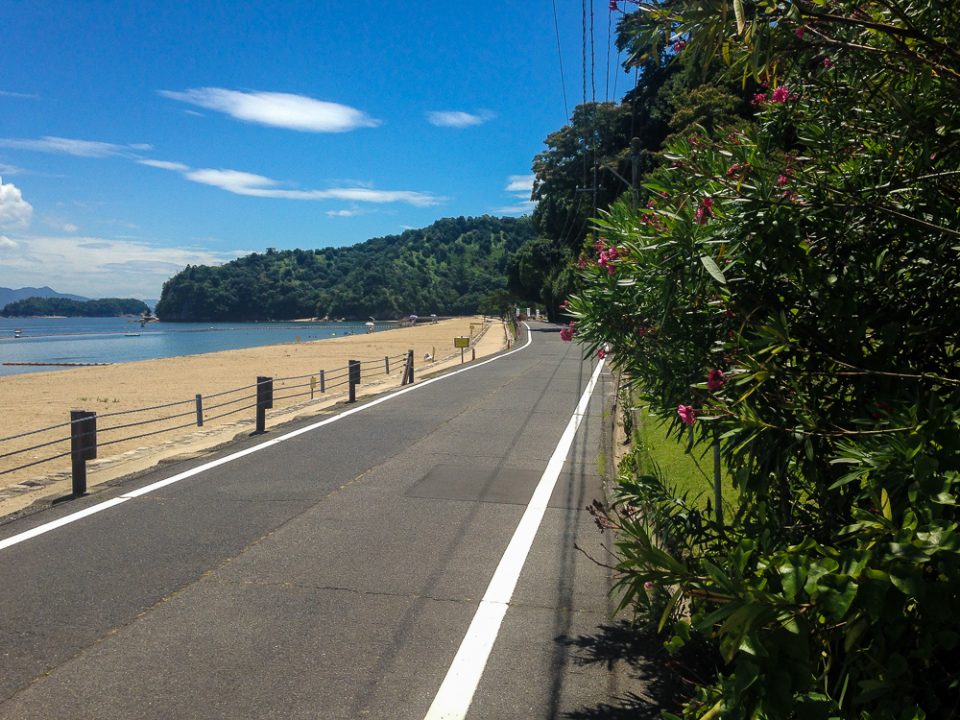
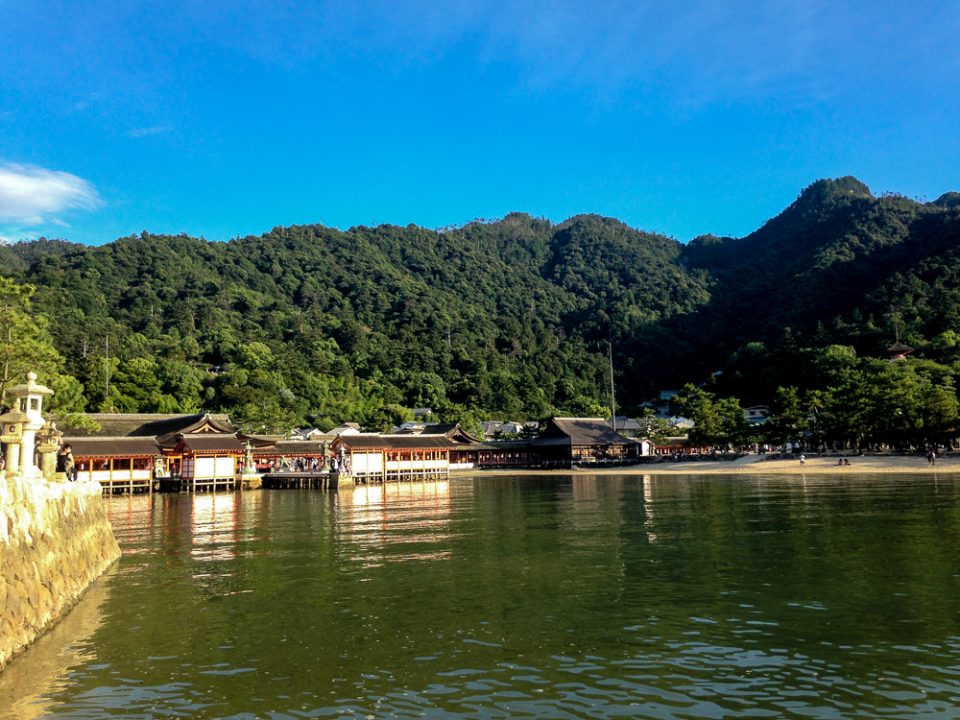
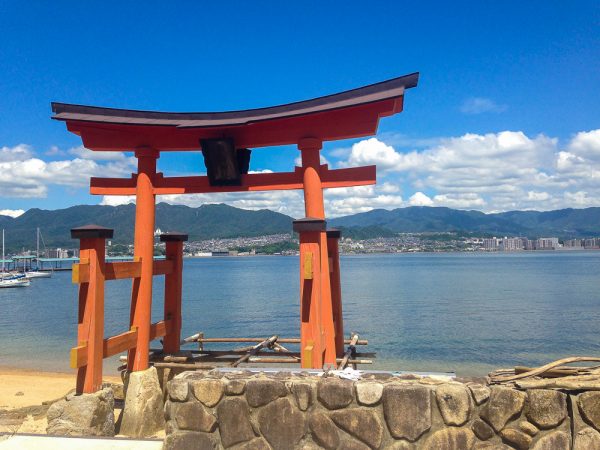
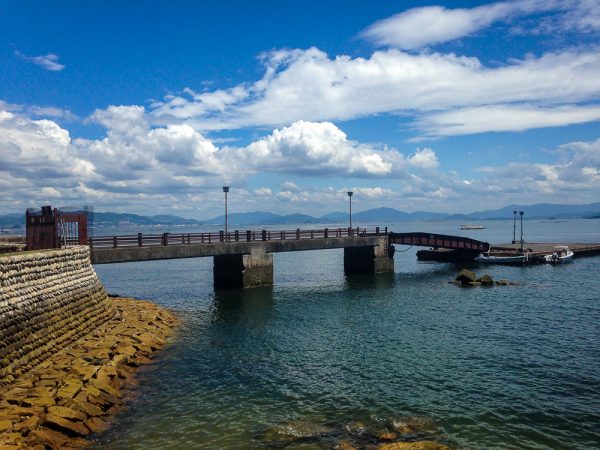
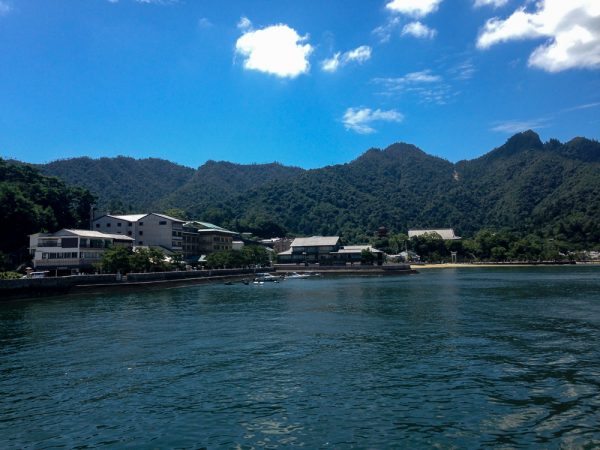
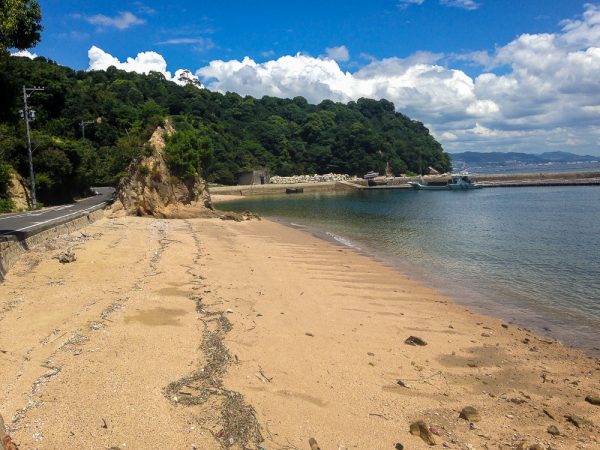
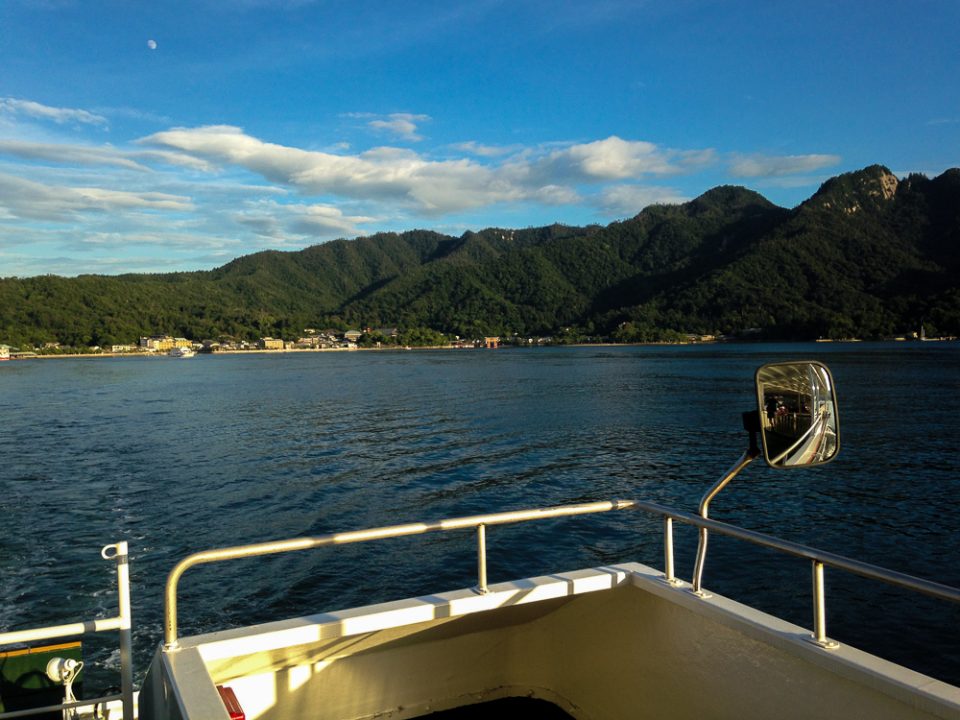



0 Comments